SIHH 2016 – A. Lange & Sohne Richard Lange Jumping Seconds (hands-on, live photos, price)
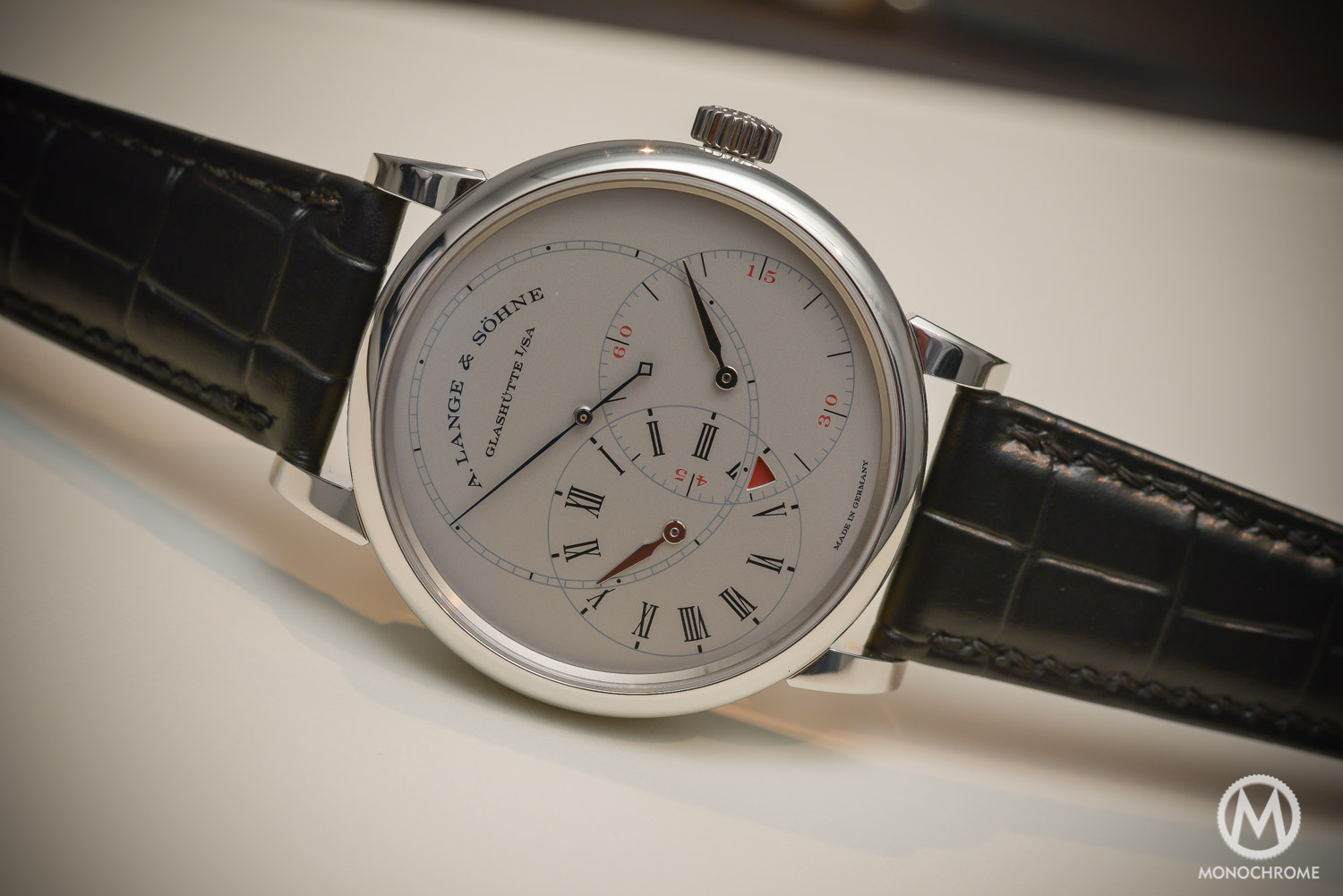
The Richard Lange Jumping Seconds watch is yet another exemplary achievement of the watchmakers from Glashütte. The watch is all about precision and innovation but also about history and heritage. The 39.9mm timepiece will be produced in platinum and is limited to 100 pieces. It combines a display of seconds in strict one-second intervals with some other clever features in honouring F.A. Lange’s invention of 1867.
The jumping second – also referred to as dead second (because the hand does not move between steps) or seconde morte – is a complication that moves the seconds-hand at every exact second.
The clarity of jumping seconds comes in handy when you want to check your heart rate during a 30-seconds timeframe, when you want to synchronize watches, need the exact second during navigation and observation, or when you just like to enjoy another pinnacle of mechanical watch-making.
Ever since the oscillation of watches has moved beyond one hertz, people had to get used to smooth(er) moving seconds hands. Nowadays you buy a quartz watch to see jumping seconds in action but during the pre-quartz era watchmakers had to come with other solutions. Seconds-hand precision was important for determining sidereal or solar time as well as geographical longitude.
There is another advantage. You can now make photos of a running mechanical watch while it is running and show a sharp and clear second’s hand!
The history of Jumping Seconds goes back to 1776 when Jean-Moise Pouzait presented a movement with a separate gear train for stopping and starting a seconds hand independently of the hours and minutes. A larger center 1Hz seconds hand made one step each second and could be stopped and released using a lever.
So it is no surprise that Ferdinand Adolph Lange also included jumping seconds in his quest for high precision observatory pocket watches. In his book “A. Lange & Söhne The watchmakers of Dresden”, Reinhard Meis describes that F.A. Lange focused on three areas: a plain lever watch with constant-force device, a match with jumping seconds and large seconds-hand. a watch with large sends-hand with fly-back. In 1867 F.A. Lange developed a mechanism for an independent central-seconds hand that jumped every second. However, it could not fly back to zero. The system was later patented by his sons.
A. Lange & Sohne Richard Lange Jumping Seconds: Constant Force, Jumping, and Zero-reset
Roughly 150 years after its invention, A. Lange & Söhne now brings these three complications together in the newly developed L094.1 calibre of the Richard Lange Jumping Seconds.
The constant-force wheel train extends from the mainspring barrel to the balance and, in one-second intervals, delivers energy to the escapement via a constant-force device. The mechanism compensates for the decreasing force of the mainspring and offsets torque fluctuations when the second hand jumps. This result is a constant amplitude across the entire power reserve period of 42 hours.
The mainspring barrel powers the jumping mechanism via another wheel train. The mechanism converts the balance frequency of six semi-oscillations per second into one single step of the seconds hand. This process is controlled by a five-point star attached to the escape-wheel arbor. Every second, one point of the star liberates the so-called flirt. This long lever, powered by the mainspring, then executes an instantaneous rotation through 360 degrees, after which it is arrested by the next point of the star. The 360-degree rotation, transmitted by the wheel train connected to the fourth-wheel arbor, moves the second’s hand to the next full-second marker. The jump switching energy is used to deliver fresh energy to the “remontoire” spring of the constant-force escapement.
The clutch on the fourth-wheel arbor consists of three discs and a hand-shaped spring. The clutch disc in the middle is secured to the fourth-wheel arbor. In the closed state, the spring firmly presses the top and bottom clutch discs together. The clutch immobilizes the large seconds hand between the acceleration and deceleration cycles that occur every second in the normal operating mode. Pulling the crown activates a system of levers that blocks the balance with a stop spring and opens the clutch. This separates the fourth-wheel arbor from the wheel train and allows virtually frictionless zero-ing. For this purpose, the ZERO-RESET lever is pivoted against the heart cam, thus instantly returning the seconds hand to the 12 o’clock position. Pushing the crown closes the clutch and releases the balance again: The movement restarts. A smart integration indeed!
What else to say about the movement?
The 390-part manually wound movement is finished according to the well-known and appreciated Lange standards: bridges made of German silver and decorated with Glashütte ribbing, hand-engraved balance cock, screwed gold chatons (8), as well as skillfully decorated and polished surfaces.
What about dial and case?
The rhodié-coloured regulator-type dial has been designed to draw attention to the seconds dial. It is located at the top and clearly visible, as a tribute to F.A. Lange’s desire to increase the visibility of the jumping seconds. Hours are represented in the sundial in the lower left and minutes in the lower right. The design looks surprisingly well-balanced, despite the differences in the design of the subdials. The case is made of platinum and has a diameter of 39.9mm.
In case you are wondering where the power reserve indicator is located: it resides in the intersection of the three subdials. Nice! The red indicator (see gif) shows up when ten (10) hours of power reserve are left.
The Richard Lange Jumping seconds will be made available in a limited edition of 100 pieces. So act quickly if you want one – but for that you’ll have to pay 78,000 Euros.

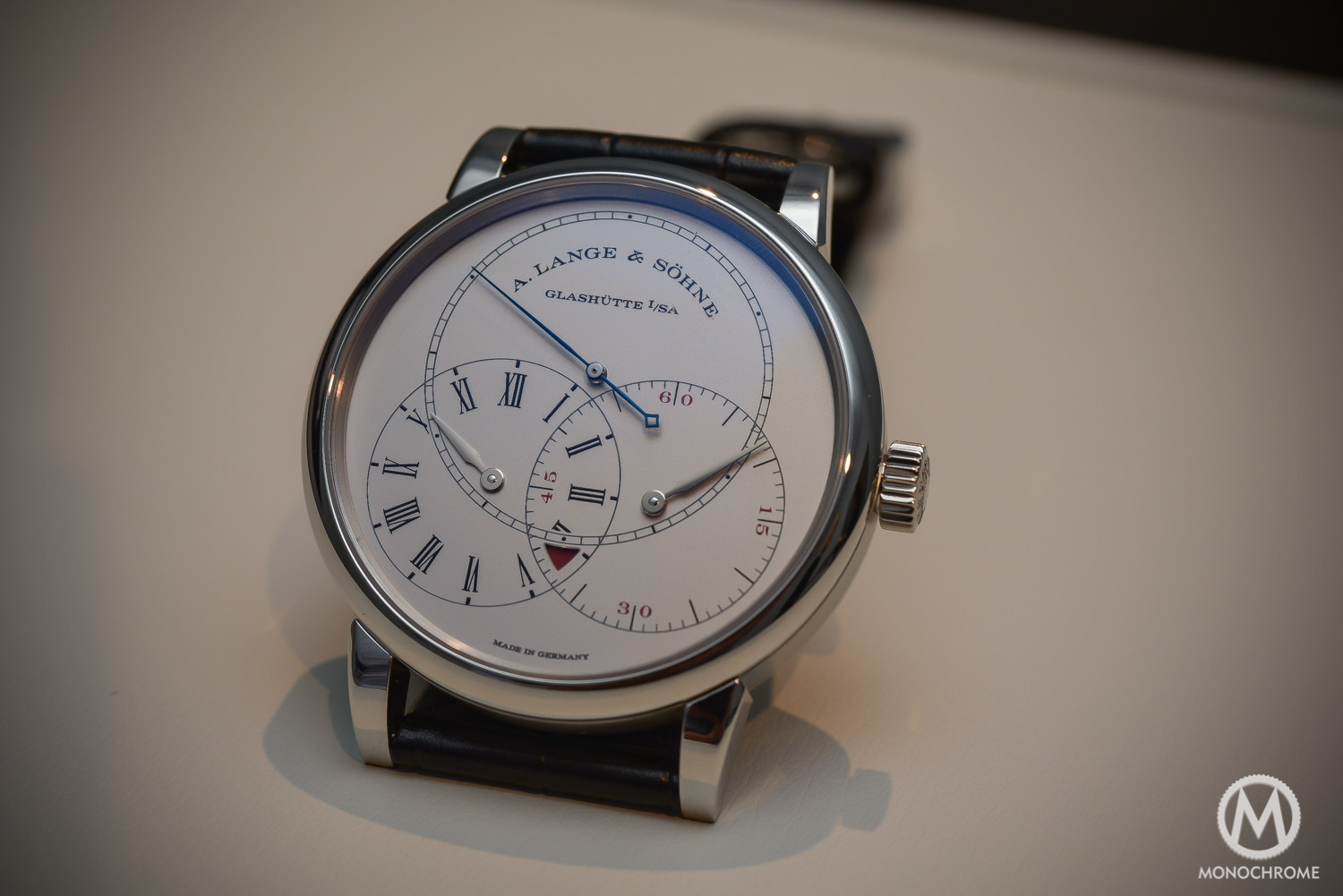
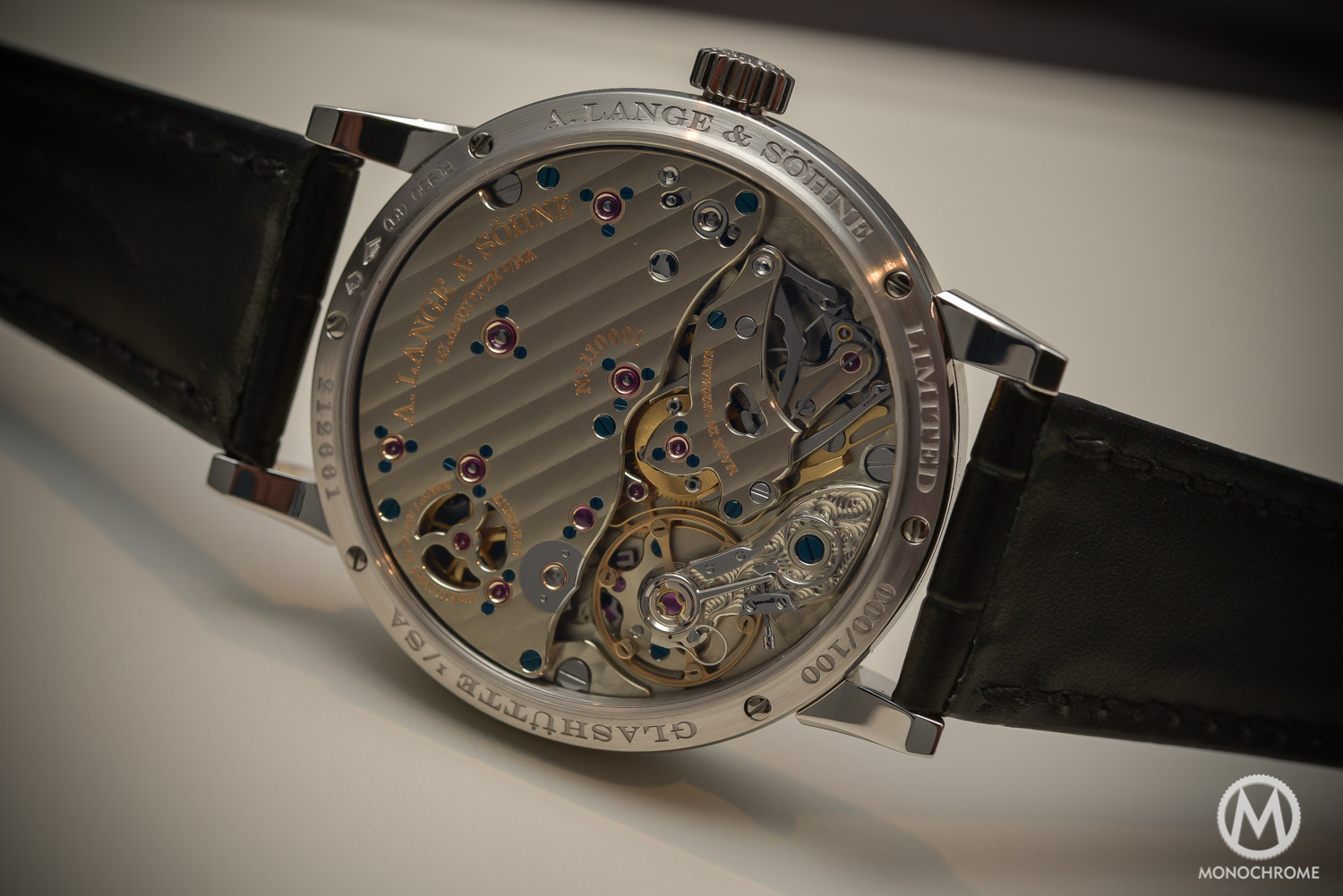
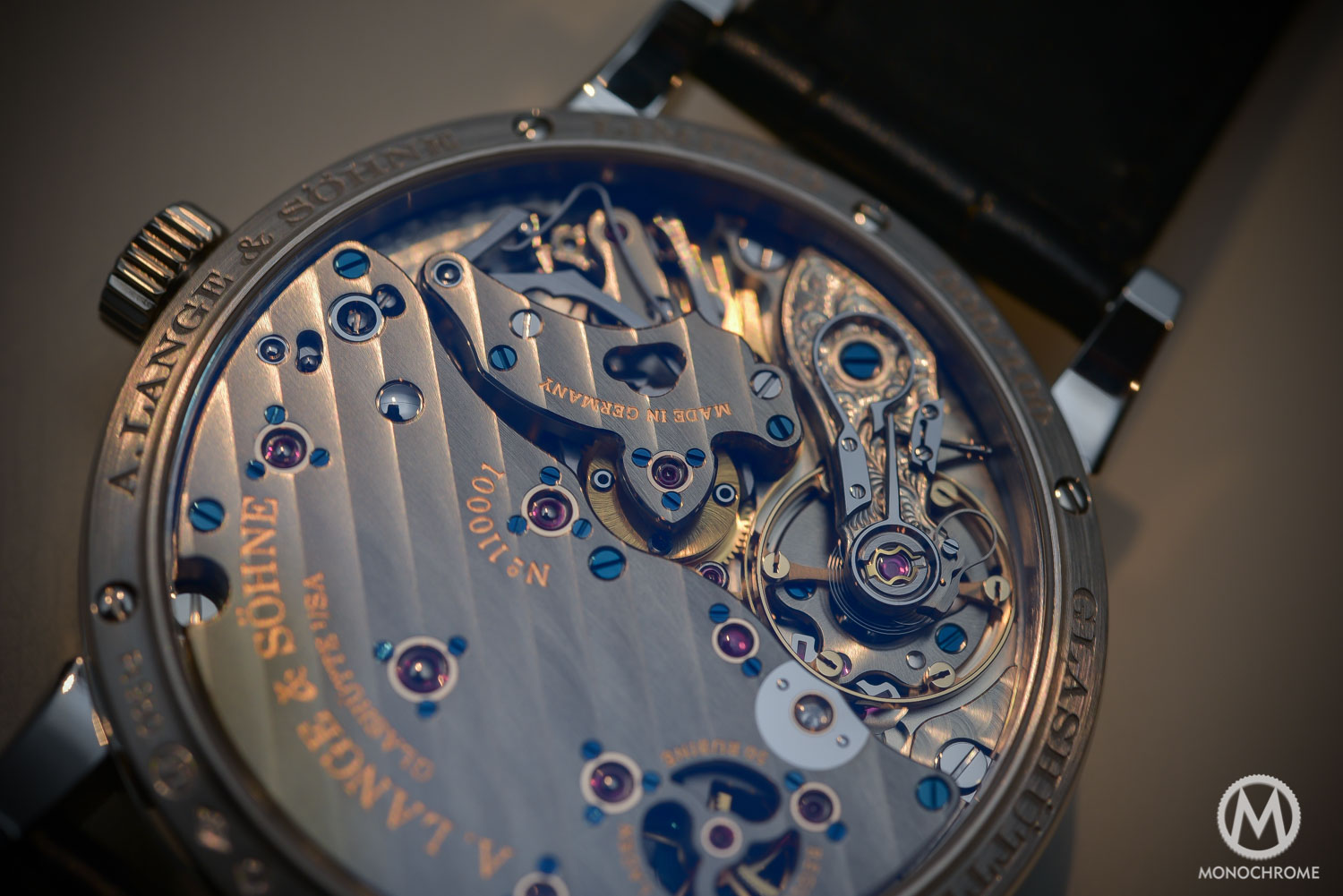
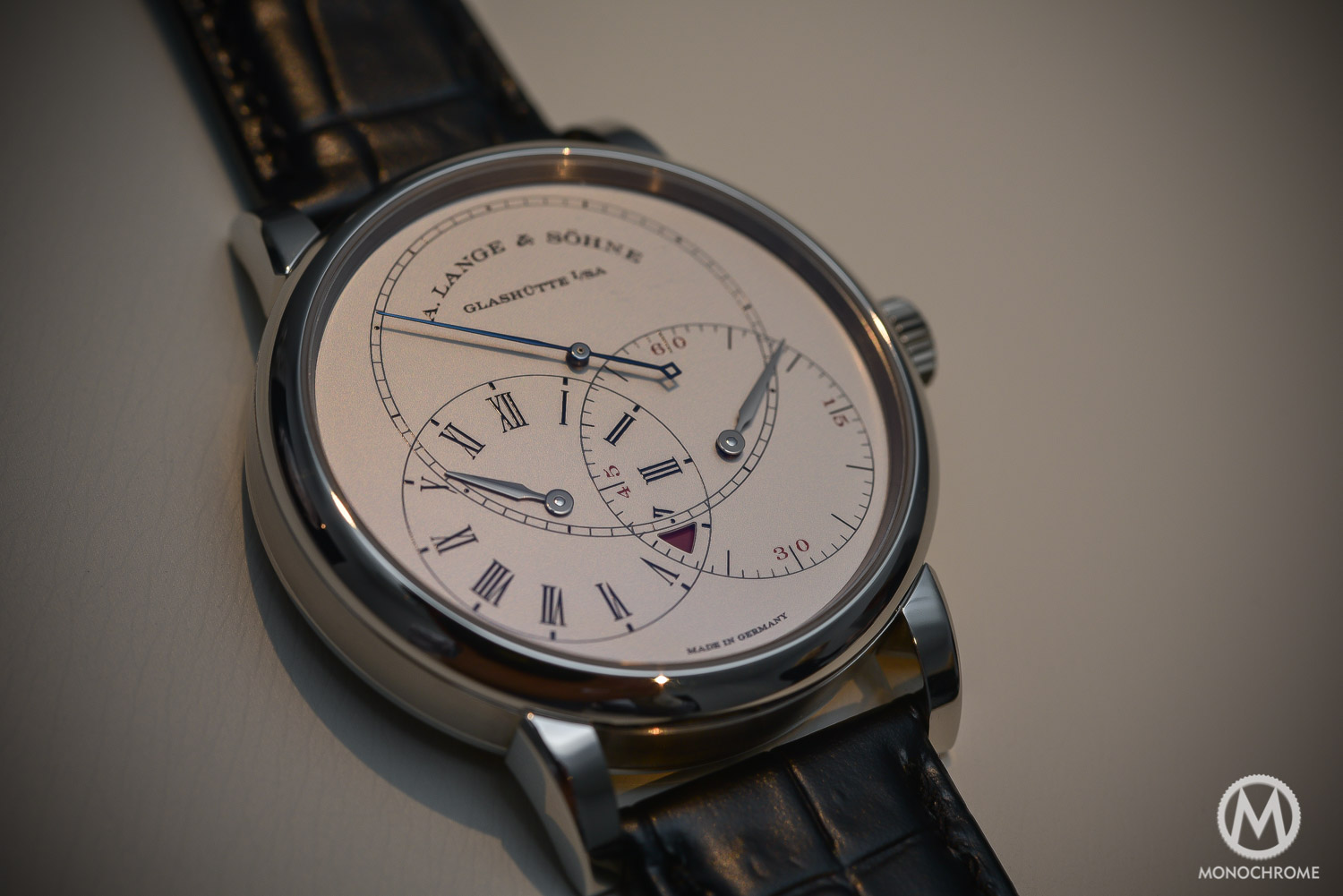
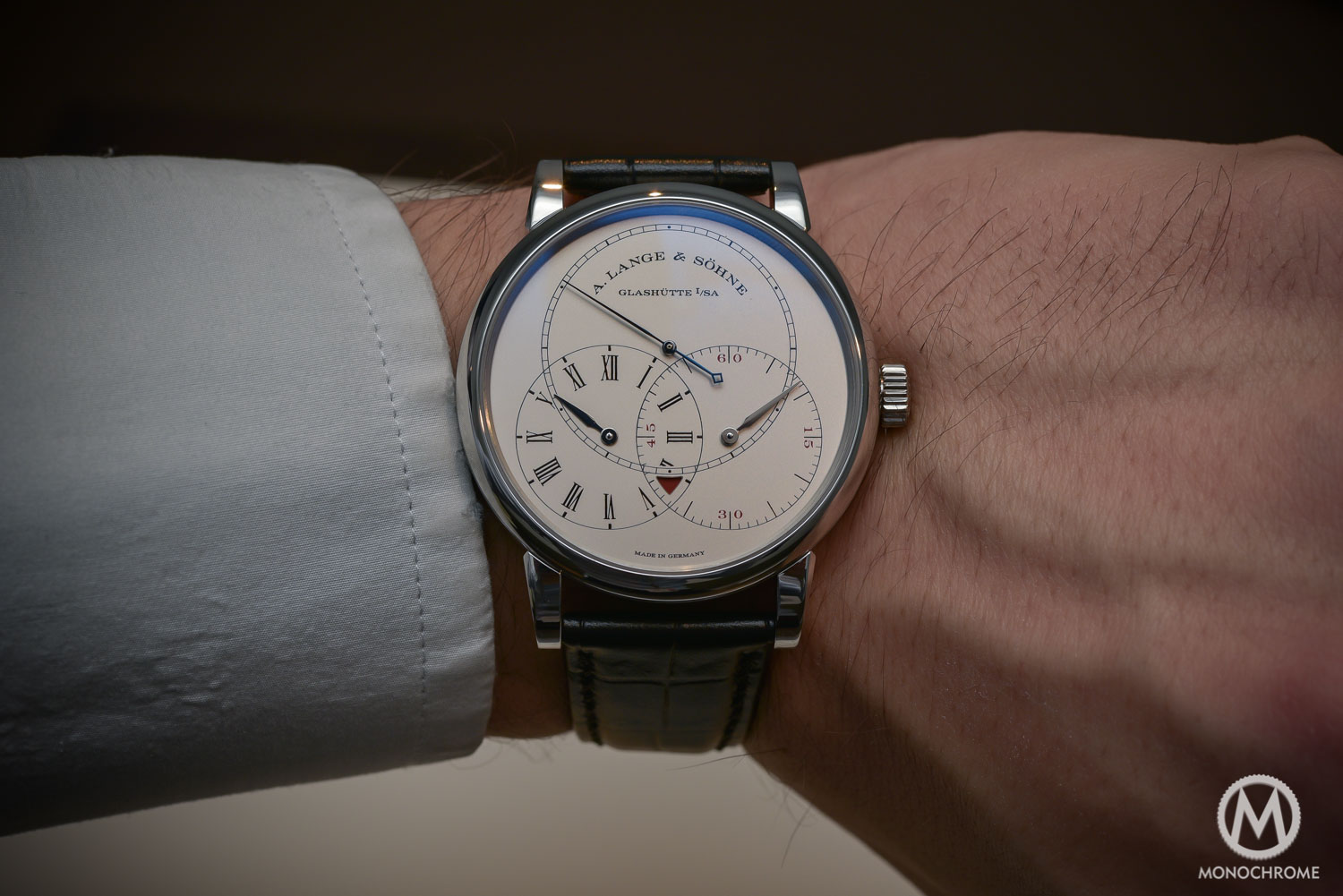



1 response
Very handsome indeed. Reminds me of Jaquet Droz watches…